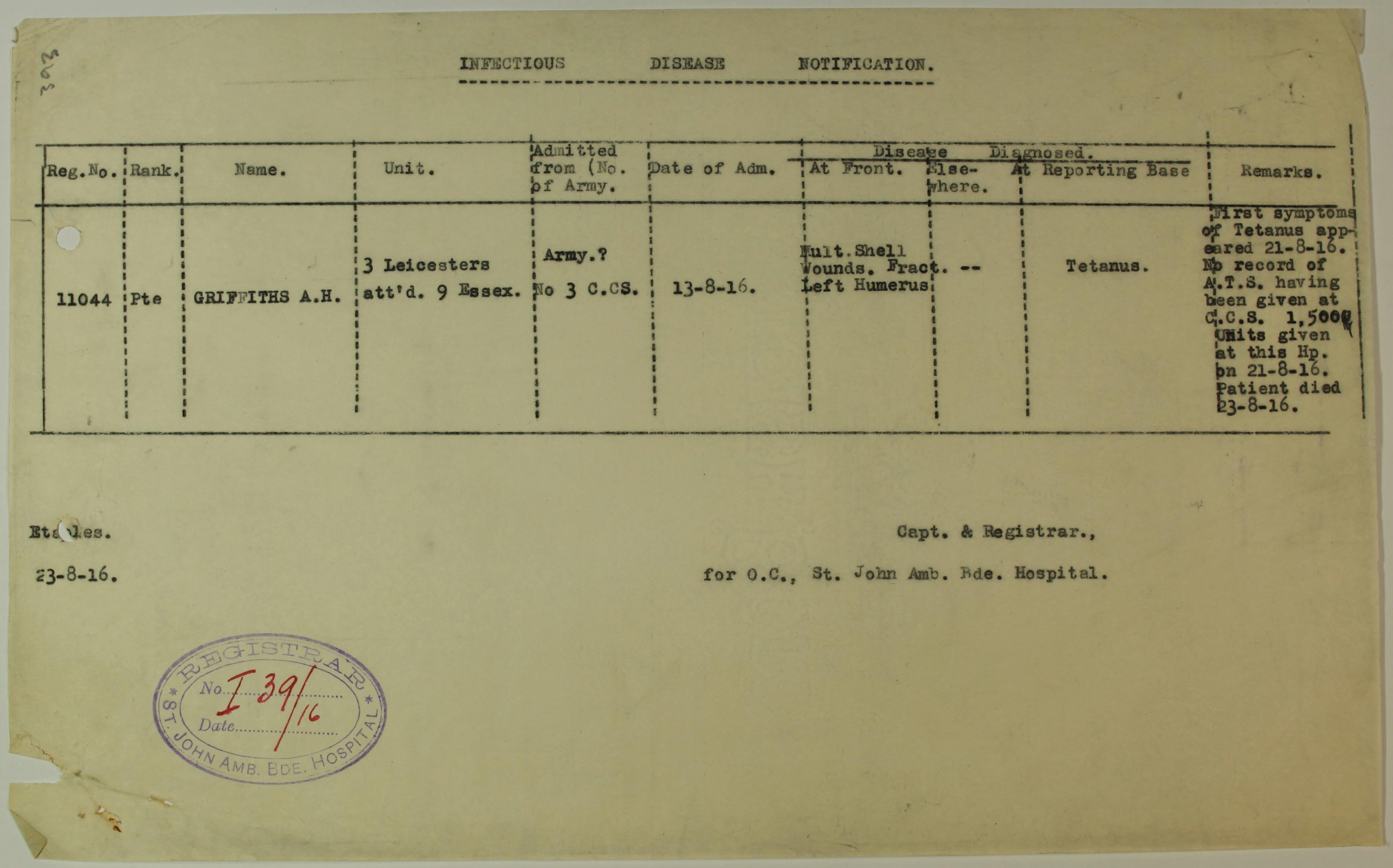
This is a notification about a patient at St John Ambulance Brigade Hospital No. I3. This was a Base Hospital which received patients from the Casualty Clearing Stations situated a few miles behind the front line. It provided treatment, surgical support or convalescence to patients before they were evacuated to hospitals in the UK or returned to their units. This source shows that wound infection from bullets or shrapnel could lead to tetanus. A person usually becomes infected with tetanus [also called lock jaw] when dirt enters a deep puncture wound or cut. The record suggests that as a precaution men with such wounds were injected against tetanus, but this did not happen at the CCS, (Catalogue ref: MH 106/2162)
Transcript
INFECTIOUS DISEASE NOTIFICATION
| Regiment Number | Rank | Name | Unit | Admitted from (Number of Army) | Date of Admission | Disease Diagnosed | Remarks | ||
| At front | Elsewhere | At Reporting Base | |||||||
| 11044 | Private | Griffiths A.H. | 3 Leicesters attached 9 Essex | Army?
No. 3 Casualty Clearing Station |
13-8-16 | Multiple shell wounds. Fractured left humerus. | — | Tetanus. | First symptoms of Tetanus appeared 21-8-16. No record of Anti Tetanus Serum having been given at Casualty Clearing Station. 1500 Units given at this hospital on 21-8-16.
Patient died 23-8-16. |
Etaples. Captain and Registrar.
23-8-16. for O.C., St. John Ambulance Brigade Hospital
[Stamp: Registrar St John Ambulance Brigade Hospital No. I3 Date 9/16]
